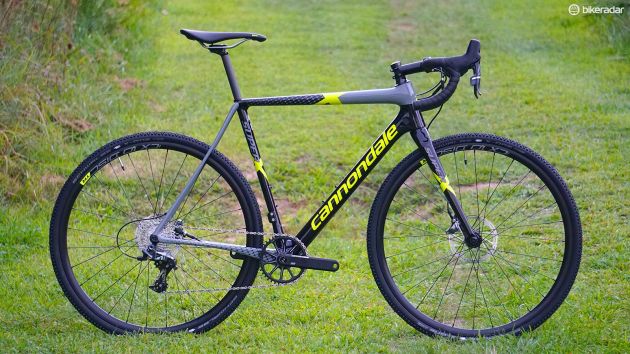You can trust Cyclingnews

This article originally appeared on BikeRadar
I was pretty excited initially by the long front-center dimension of the SuperX. But after a few rides, I was questioning the execution — the 71-degree head tube angle is quite slack for a 'cross bike, and it was noticeable.
- Highs: 'Cross-specific cable routing, lively composite layup, tire clearance
- Lows: High-speed stability, power transfer, wheels, seatpost clamp
- Buy if: You're more frequently lining up for mixed-terrain races than true 'cross racing
Yes, the SuperX absolutely changes the way racers can approach technical sections at speed, but with a very 'early-29er 'sensation of heavy steering. While I understand the approach and could feel the benefits in tricky terrain (at high speeds), using a longer top tube, shorter stem and a 72-degree head tube would yield the same benefits, without the heavy handling at slower speeds.
Regardless, if the SuperX is the bike you're looking to roll, it's no doubt you can adapt to the geo, but when paired next to all the other CX bikes on test it's certainly noticeable that in tight conditions, riders will be working against the bike.
Interestingly, this long front-center approach should have yielded a confident, high-speed descending machine, but it actually was a bit unnerving on loose terrain at high speeds. While I don't have an explanation as to why, this is another area where riders would adapt to this as their 'new normal'.
I had recurring issues with a slipping 25.4mm seatpost. Overhauling the binder on two occasions and abundant use of carbon paste didn't solve the issue. Eventually the chronic wrenching led to the binder falling in to the frame and getting stuck in the seat tube.
However, I'd be remiss to point out that I know six local racers with this bike and not one of them has had the same issue — I'm always okay with being wrong. But the fact that the binder can fall in to the frame should be addressed for next year's update.
The composite layup and tube shapes created a vertically active and comfortable frame that at times felt more like titanium than carbon. That should be seen as a compliment, but it surely depends on your priorities — that lively comfort came at a cost to acceleration and 'snap'.
Unfortunately, I wasn't able to test the bike with the Industry Nine ULCX wheelset because Cannondale requires a complete re-dish of the rear wheel, which is something worth considering for riders like myself that swap wheelsets between road disc, gravel and CX. But its engineering strategy allows the firm to shorten its chainstays by 0.5mm compared to other bikes, so it's not without reason. Plus, the re-dished rear wheel has much better triangulation, and that's a good thing.
For riders seeking maximum comfort, or those that see more gravel miles than 'cross tape, the SuperX is blessed with abundant tire clearance, fantastic vertical compliance and clean lines.